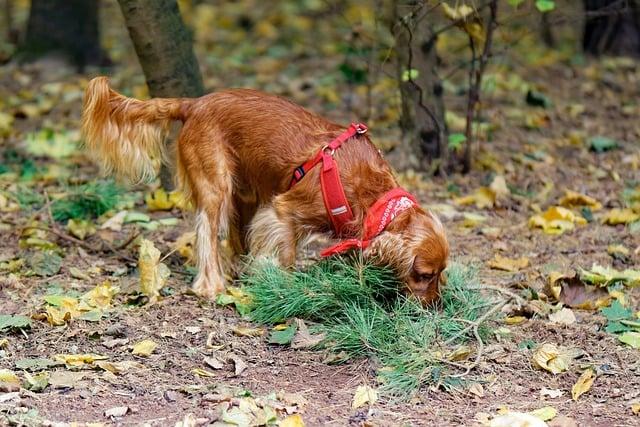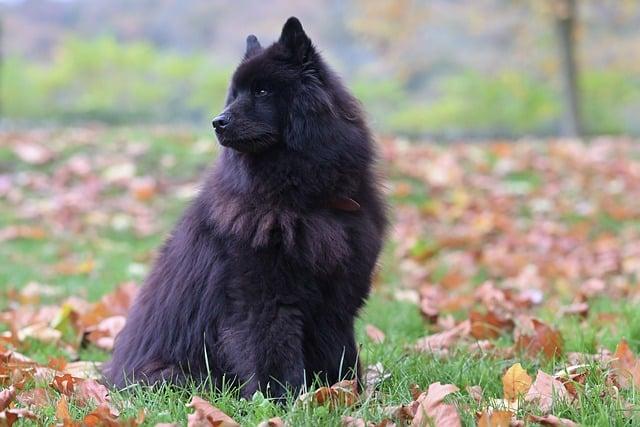Imagine a once obedient golden retriever named Max, who suddenly starts ignoring commands, stealing food from the counter, and digging up the garden. His owner, Sarah, is baffled—has Max entered a rebellious phase? Just like teenagers, dogs can experience a shift in behavior as they mature. This phase often stems from increased independence and energy. Understanding this can help owners respond with patience and training, rather than frustration. Embracing this journey can strengthen the bond between you and your furry friend, leading to a more harmonious relationship.
Contents
- Understanding the Rebellious Phase in Dogs and Its Causes
- Recognizing the Signs of Rebellion in Your Canine Companion
- Effective Training Strategies to Navigate Your Dogs Rebellious Behavior
- Building a Stronger Bond Through Positive Reinforcement Techniques
- Q&A
Understanding the Rebellious Phase in Dogs and Its Causes
Every dog owner has likely experienced moments when their furry friend seems to disregard commands or engage in mischievous behavior. This phenomenon, often referred to as a “rebellious phase,” can be perplexing and frustrating. Understanding the underlying causes of this behavior is crucial for effective management and training. Dogs, much like humans, undergo various developmental stages, and these phases can significantly influence their behavior.
One of the primary factors contributing to this rebellious behavior is age and maturity. Puppies, typically between six months and two years, are in a critical developmental stage where they test boundaries and assert their independence. This is a natural part of their growth, as they learn about their environment and their place within the family hierarchy. During this time, they may challenge commands they previously followed, leading to what appears to be rebellious behavior.
Another significant cause is lack of mental and physical stimulation. Dogs are intelligent creatures that require regular exercise and mental engagement to thrive. When they are bored or under-stimulated, they may resort to undesirable behaviors as a means of entertainment. Activities such as interactive play, puzzle toys, and training sessions can help channel their energy positively, reducing the likelihood of rebellious antics.
Lastly, changes in the environment can also trigger a rebellious phase. Dogs are sensitive to their surroundings, and any alterations—such as moving to a new home, the arrival of a new pet, or changes in the owner’s routine—can lead to stress and anxiety. This emotional turmoil may manifest as defiance or disobedience. Recognizing these triggers and providing a stable, reassuring environment can help mitigate these behaviors and foster a more harmonious relationship between you and your canine companion.
Recognizing the Signs of Rebellion in Your Canine Companion
As a dog owner, it’s essential to be aware of the subtle and not-so-subtle signs that your furry friend may be entering a phase of rebellion. This behavior can manifest in various ways, and recognizing these signs early can help you address any underlying issues. Common indicators include:
- Disobedience: If your dog suddenly starts ignoring commands they previously followed, it may be a sign of defiance.
- Destructive Behavior: Chewing furniture, digging in the yard, or tearing up household items can indicate frustration or boredom.
- Excessive Barking: An increase in vocalization can be a way for your dog to express their dissatisfaction or seek attention.
- Withdrawal: If your dog becomes less affectionate or avoids interaction, it may be a sign of emotional turmoil.
Another critical aspect to consider is changes in your dog’s routine or environment. Dogs thrive on consistency, and any disruption can lead to feelings of insecurity, prompting rebellious behavior. Pay attention to factors such as:
- New Family Members: The introduction of a new pet or person can upset the established hierarchy.
- Changes in Schedule: Variations in feeding times, walks, or playtime can confuse your dog and lead to frustration.
- Relocation: Moving to a new home can be a significant stressor, causing your dog to act out.
Understanding the emotional state of your dog is crucial during this phase. Dogs are incredibly intuitive and can pick up on their owner’s stress or anxiety, which may exacerbate their rebellious behavior. To foster a positive environment, consider implementing strategies such as:
- Consistent Training: Reinforce commands and establish clear boundaries to help your dog feel secure.
- Positive Reinforcement: Reward good behavior with treats or praise to encourage compliance.
- Regular Exercise: Ensure your dog receives adequate physical and mental stimulation to reduce boredom and pent-up energy.
Lastly, it’s essential to remain patient and understanding during this challenging time. Rebellion in dogs is often a cry for help, signaling that they need more attention, structure, or reassurance. By recognizing these signs and responding appropriately, you can guide your canine companion back to a state of harmony and obedience. Remember, a little empathy goes a long way in nurturing a strong bond with your pet.
Effective Training Strategies to Navigate Your Dogs Rebellious Behavior
Understanding your dog’s rebellious behavior is crucial for effective training. Dogs, much like humans, can experience phases of defiance, often influenced by their age, environment, and socialization. To address this behavior, it’s essential to implement strategies that not only correct but also reinforce positive actions. A well-structured training regimen can transform a challenging phase into an opportunity for growth and bonding.
One of the most effective strategies is **positive reinforcement**. This approach encourages desired behaviors by rewarding your dog with treats, praise, or playtime when they comply with commands. By focusing on what your dog does right, you create a more enjoyable training experience that fosters trust and motivation. Consider the following techniques:
- Use high-value treats that your dog loves.
- Incorporate play as a reward for good behavior.
- Be consistent with commands and rewards to avoid confusion.
Another key strategy is **setting clear boundaries**. Dogs thrive on structure, and establishing rules helps them understand what is expected. Consistency is vital; ensure that all family members enforce the same rules to avoid mixed signals. Here are some tips for setting boundaries:
- Define specific areas where your dog is allowed and not allowed.
- Use commands consistently to reinforce boundaries.
- Redirect unwanted behaviors with alternative actions.
Lastly, **socialization** plays a pivotal role in curbing rebellious tendencies. Exposing your dog to various environments, people, and other animals helps them develop confidence and adaptability. A well-socialized dog is less likely to act out due to fear or anxiety. To enhance socialization, consider these activities:
- Enroll in group training classes.
- Arrange playdates with other dogs.
- Take your dog on outings to different locations.
Building a Stronger Bond Through Positive Reinforcement Techniques
Understanding your dog’s behavior during what may seem like a rebellious phase is crucial for fostering a harmonious relationship. Instead of viewing these actions as defiance, consider them as opportunities for growth and learning. By employing positive reinforcement techniques, you can effectively guide your dog towards desired behaviors while strengthening your bond. This approach not only encourages good behavior but also builds trust and confidence between you and your furry companion.
Positive reinforcement involves rewarding your dog for exhibiting desirable behaviors, which can include treats, praise, or playtime. This method is far more effective than punishment, as it creates a positive association with the behaviors you want to encourage. Here are some key benefits of using positive reinforcement:
- Enhances Learning: Dogs are more likely to repeat behaviors that result in positive outcomes.
- Reduces Anxiety: A supportive environment lowers stress levels, making your dog feel secure.
- Strengthens Your Bond: Sharing positive experiences fosters a deeper connection.
- Encourages Exploration: Dogs are more willing to try new things when they feel safe and rewarded.
During this phase, it’s essential to remain patient and consistent. Dogs thrive on routine and clear expectations. When they engage in behaviors that seem rebellious, redirect their attention to more appropriate actions and reward them when they comply. This not only helps them learn but also reinforces your role as a supportive leader in their lives. Remember, every interaction is a chance to teach and bond.
Incorporating games and interactive training sessions can also be a fun way to engage your dog while reinforcing positive behaviors. Activities that stimulate their mind and body can reduce unwanted behaviors stemming from boredom or excess energy. By making training enjoyable, you create a positive atmosphere where your dog feels motivated to learn and grow, ultimately leading to a more fulfilling relationship.
Q&A
-
Do dogs really have a rebellious phase?
Yes, dogs can exhibit behaviors that may seem rebellious, particularly during adolescence, which typically occurs between 6 months and 2 years of age. This phase is characterized by increased independence and testing boundaries, similar to teenage behavior in humans.
-
What causes this rebellious behavior in dogs?
Rebellious behavior in dogs is often a result of hormonal changes, social maturation, and a desire for independence. As dogs grow, they may challenge previously learned commands and exhibit more assertive behavior as they explore their environment.
-
How can I manage my dog’s rebellious phase?
Consistency in training is key. Use positive reinforcement techniques to encourage desired behaviors. Establish clear rules and boundaries, and ensure regular exercise and mental stimulation to help channel their energy constructively.
-
Is this phase temporary?
Yes, the rebellious phase is typically temporary. With patience, consistent training, and socialization, most dogs will outgrow this phase and return to more manageable behavior as they mature into adulthood.
understanding your dog’s rebellious phase is crucial for fostering a strong bond and effective training. Embrace this natural behavior with patience and consistency, and you’ll guide your furry friend toward a well-behaved future.

大家好,我是彼得潘,專業的手法身體治療師。我喜歡探索和研究各種主題,並透過與人工智慧的合作分享專業、實用、有趣的文章。我們定期進行人工審核,以確保內容的準確性。如果您發現文章中有任何不準確的地方,請隨時與我們聯繫,我們會及時糾正。您可以透過 [email protected] 與我們聯繫。



